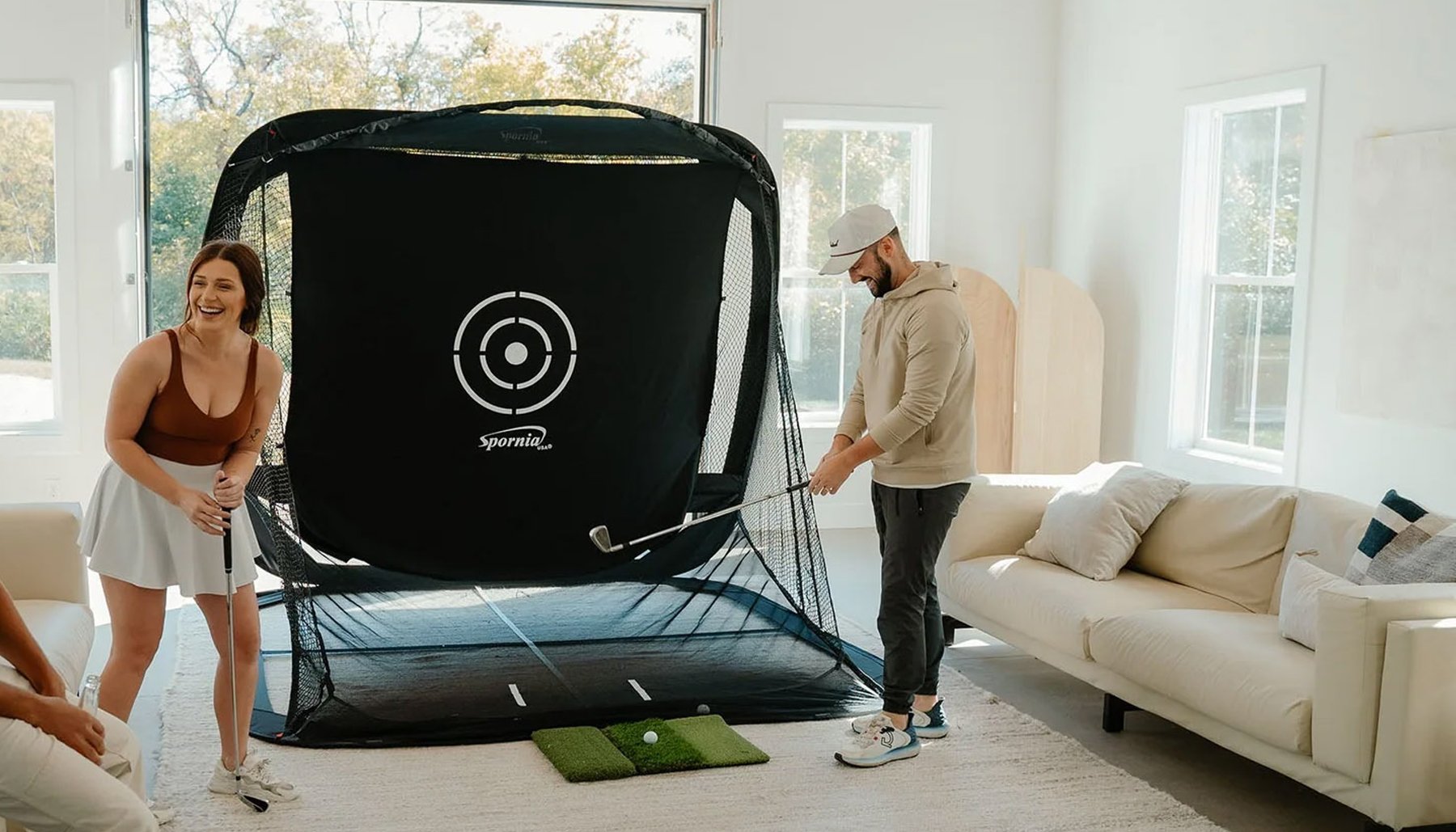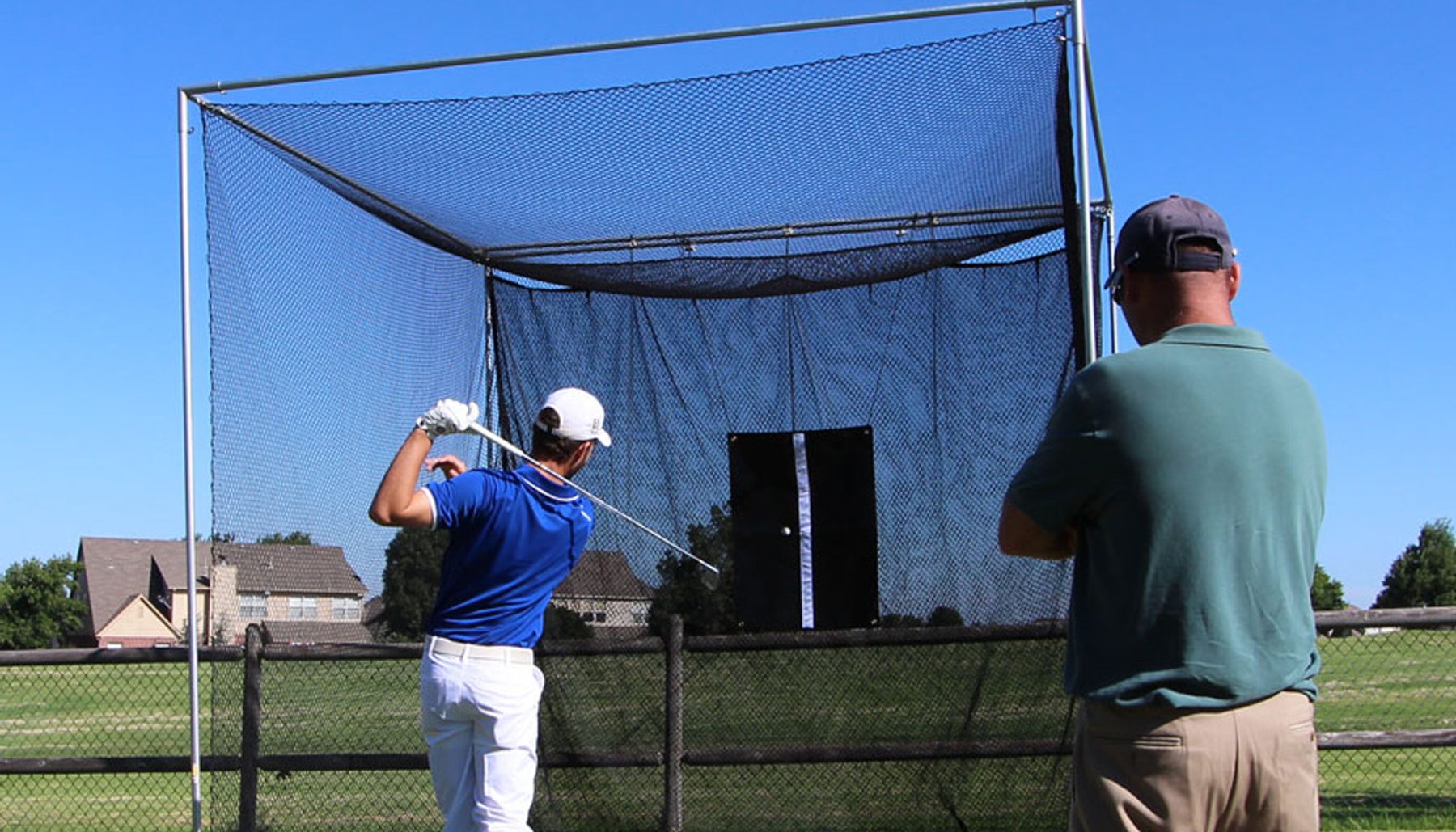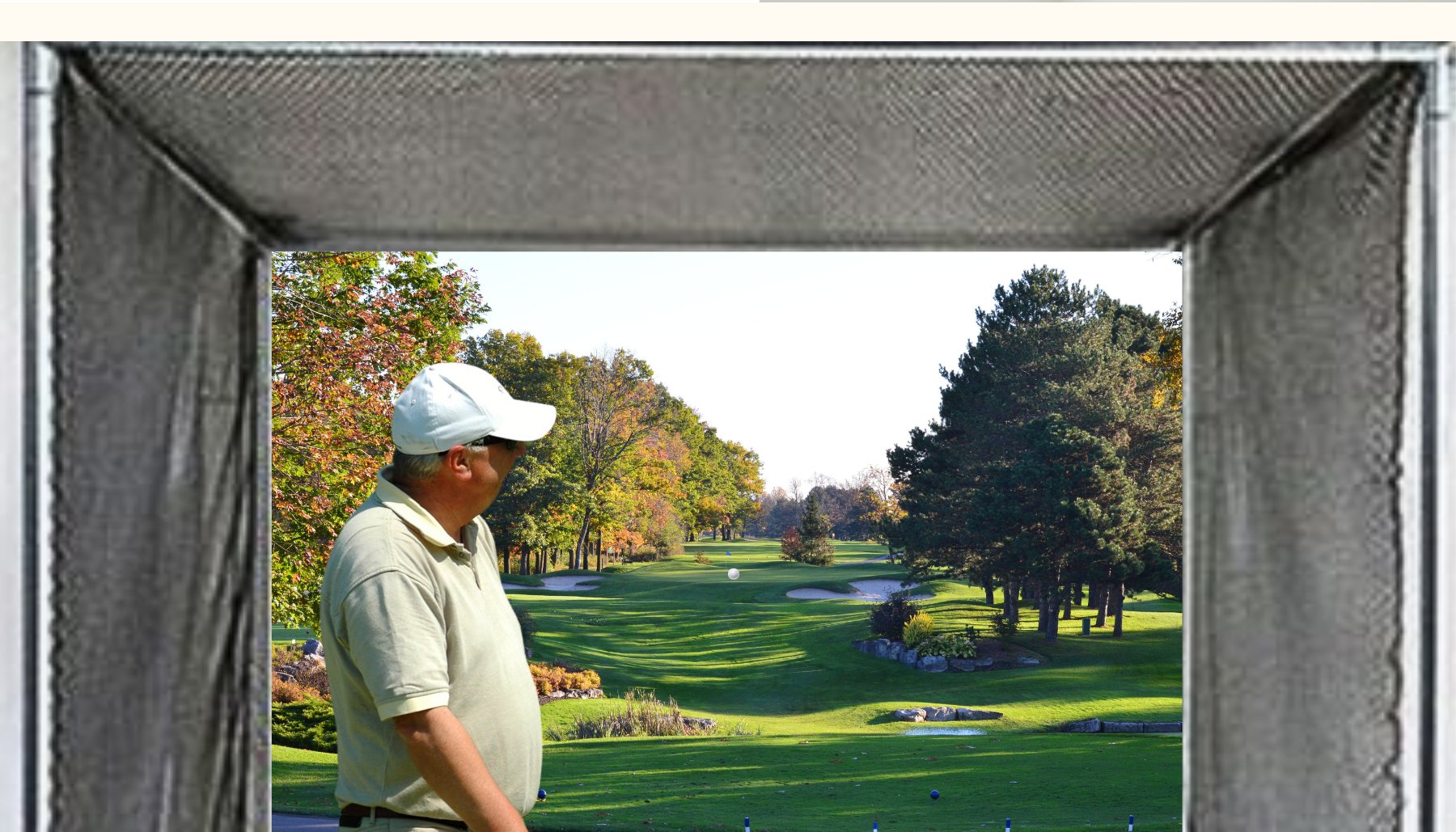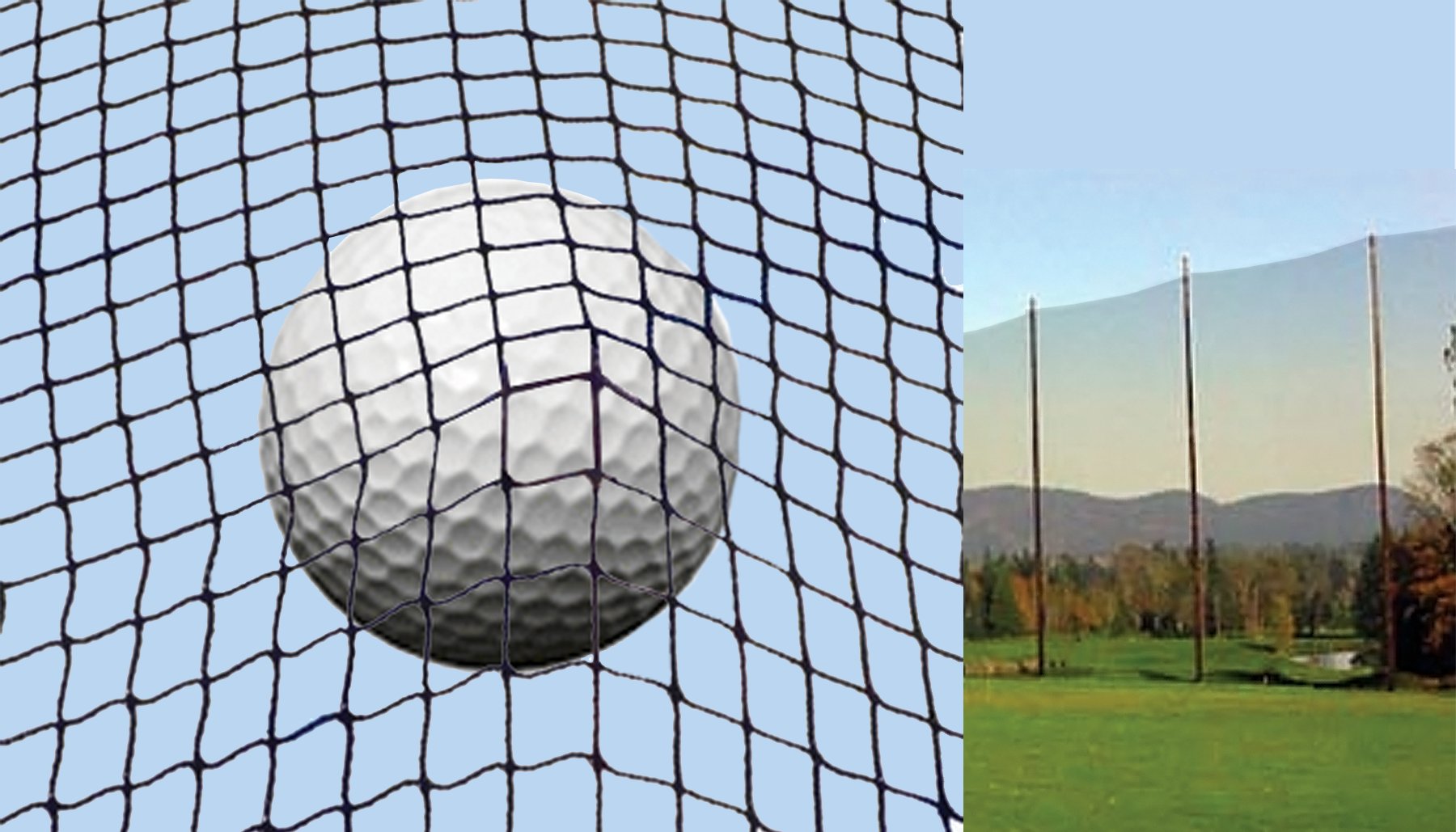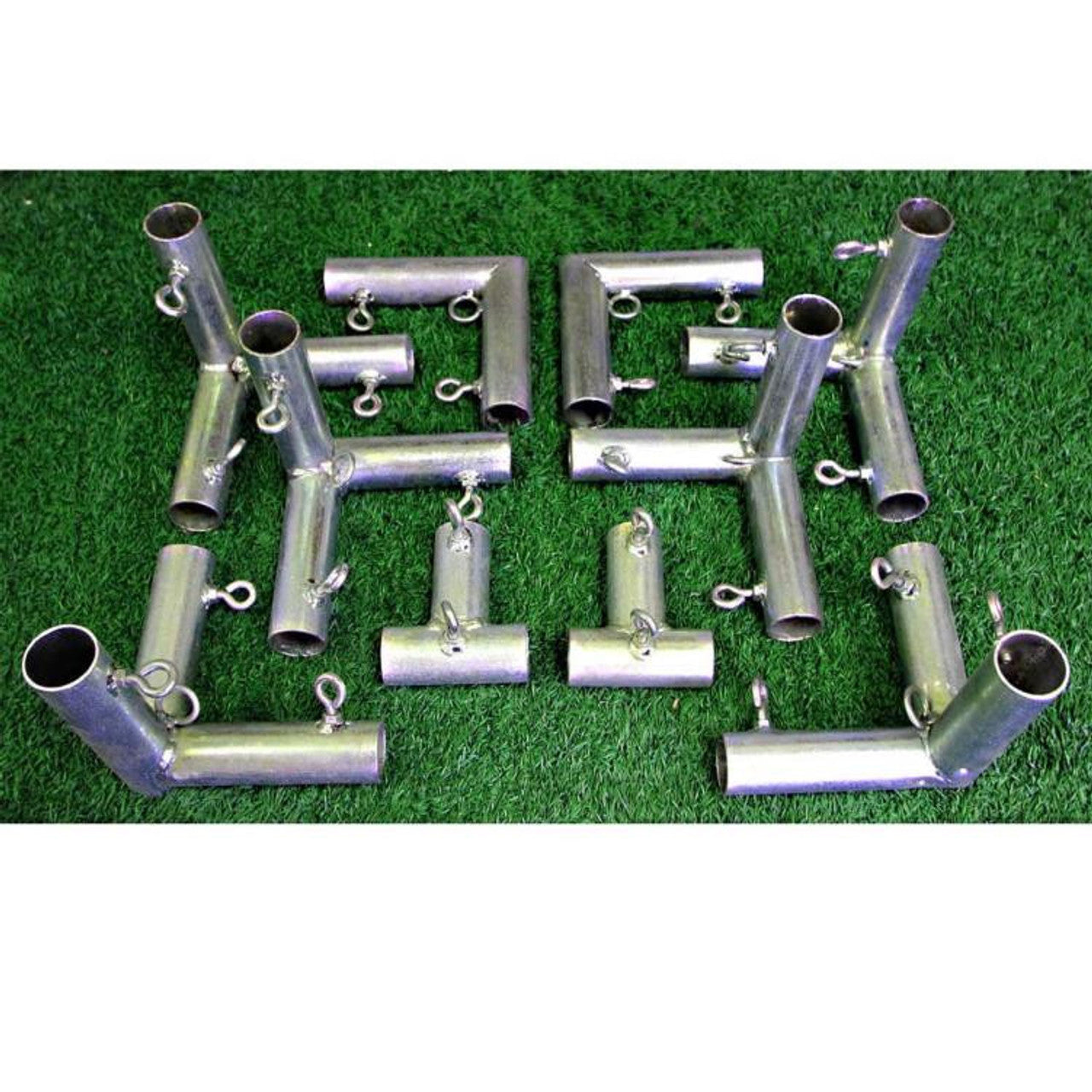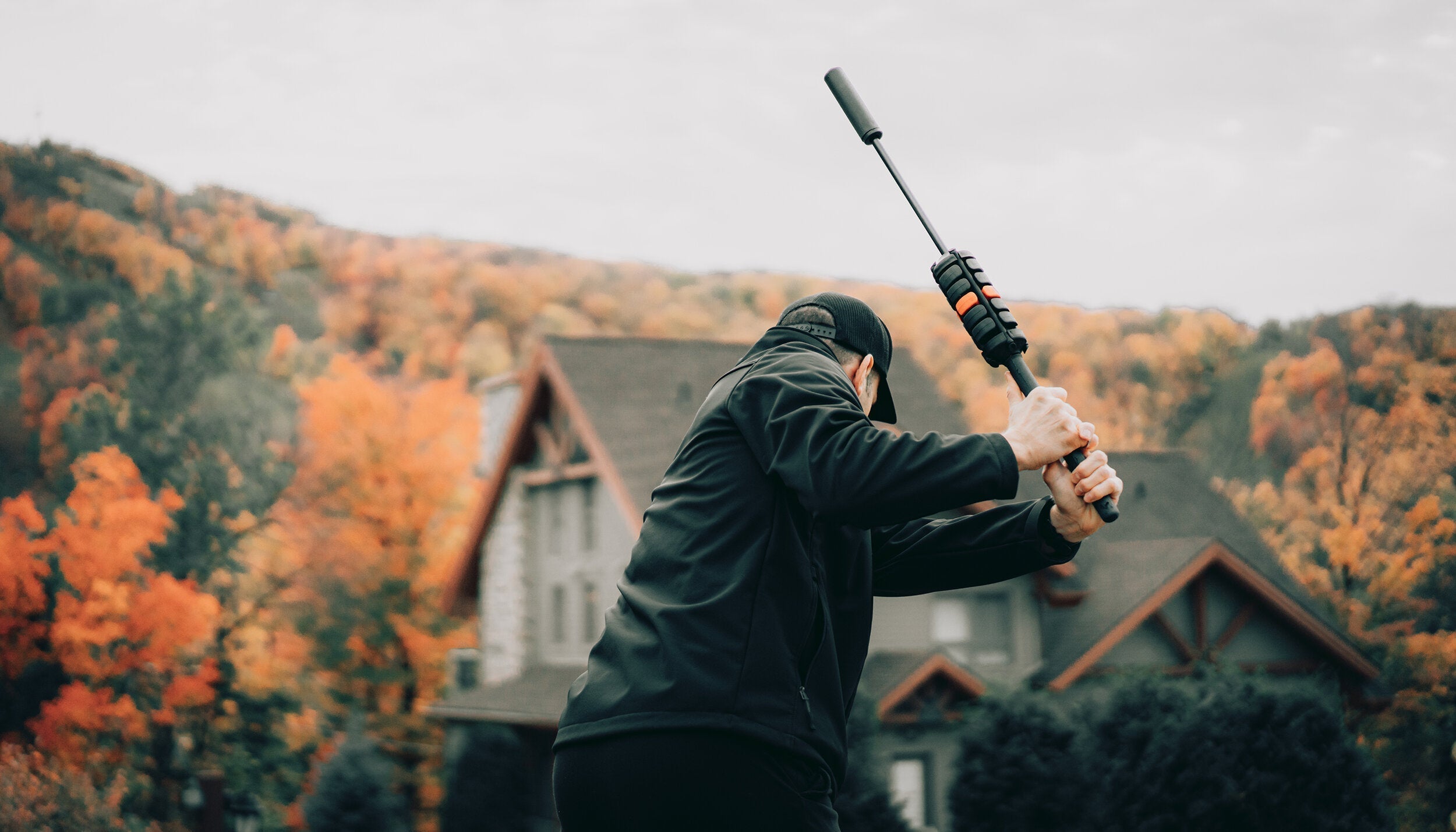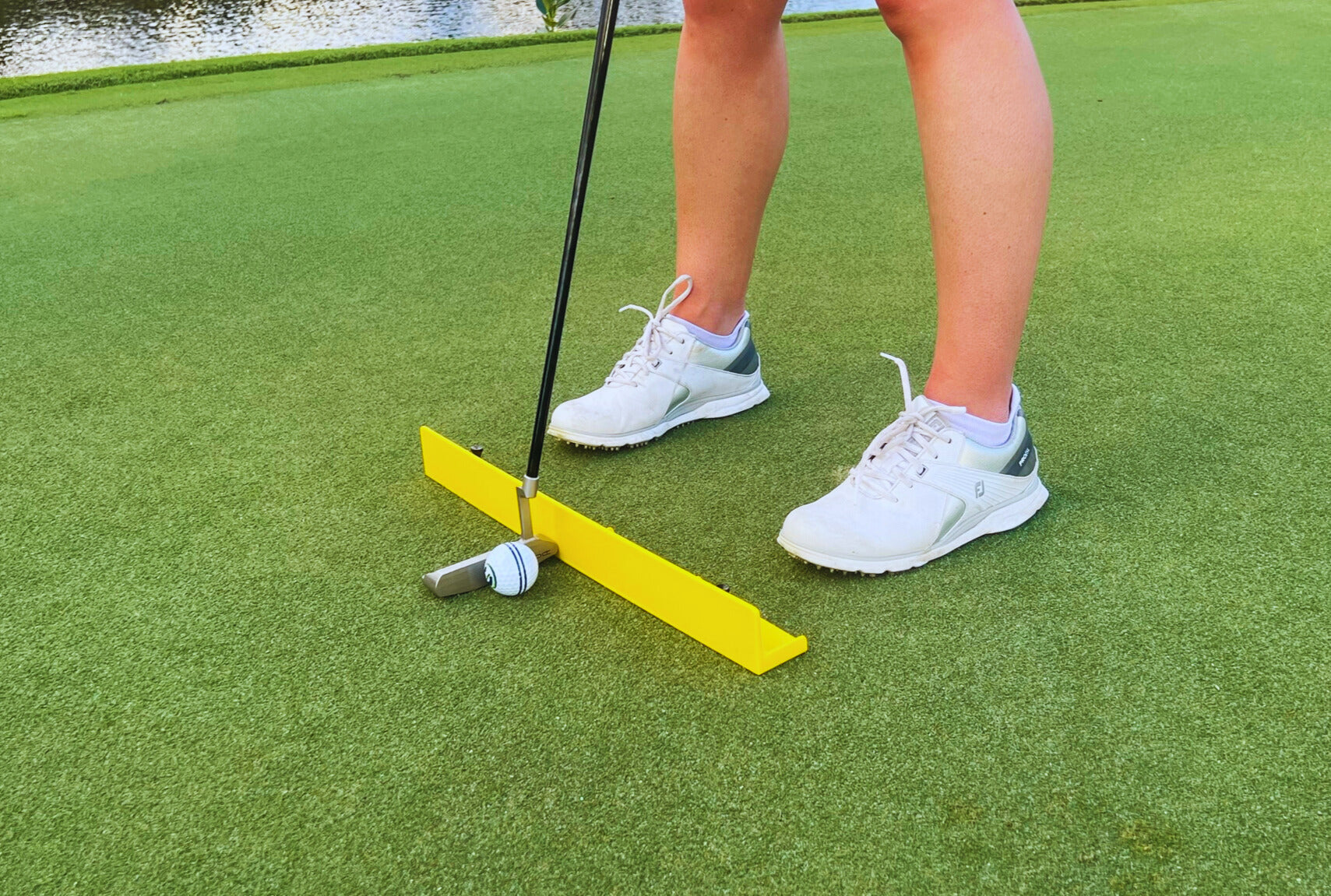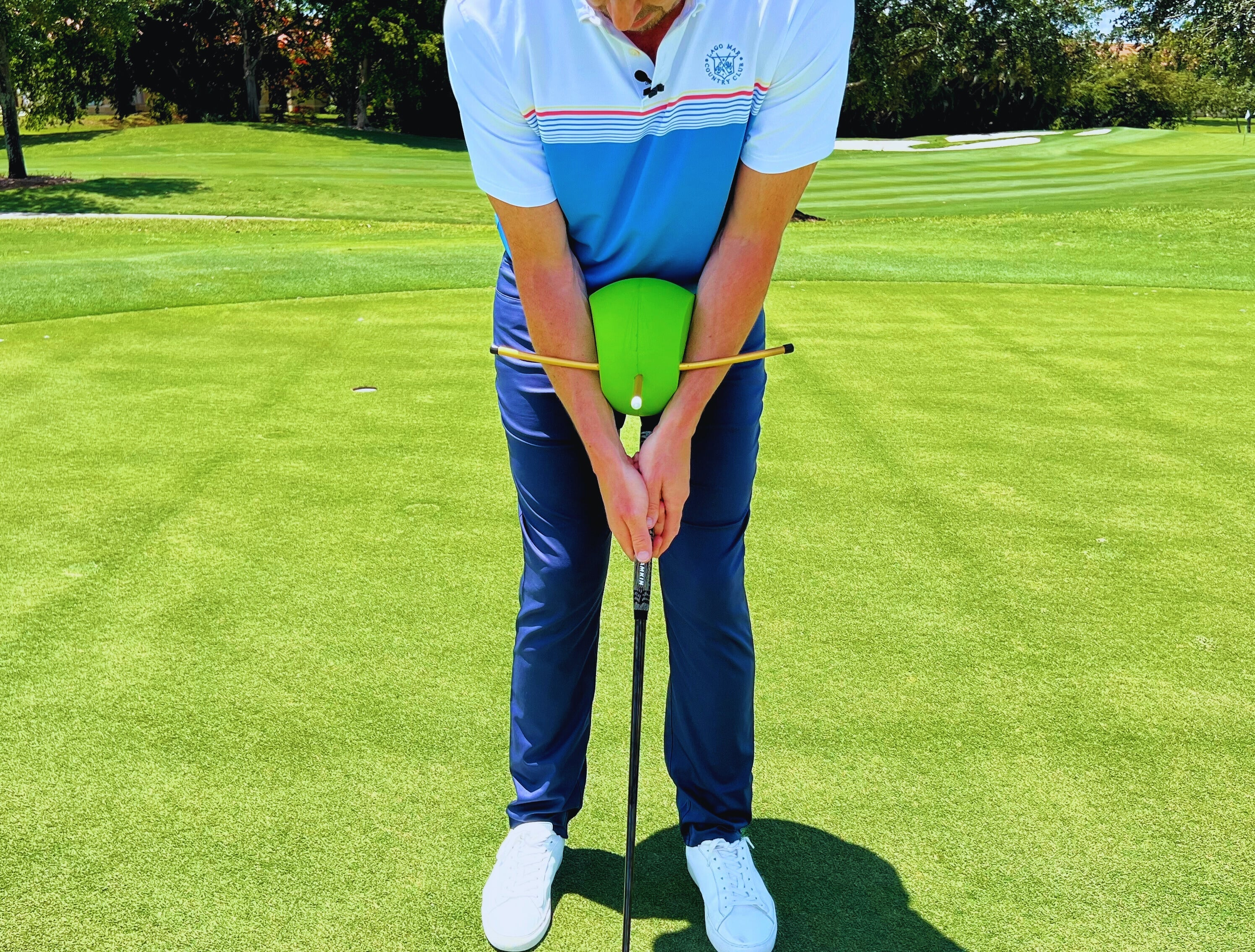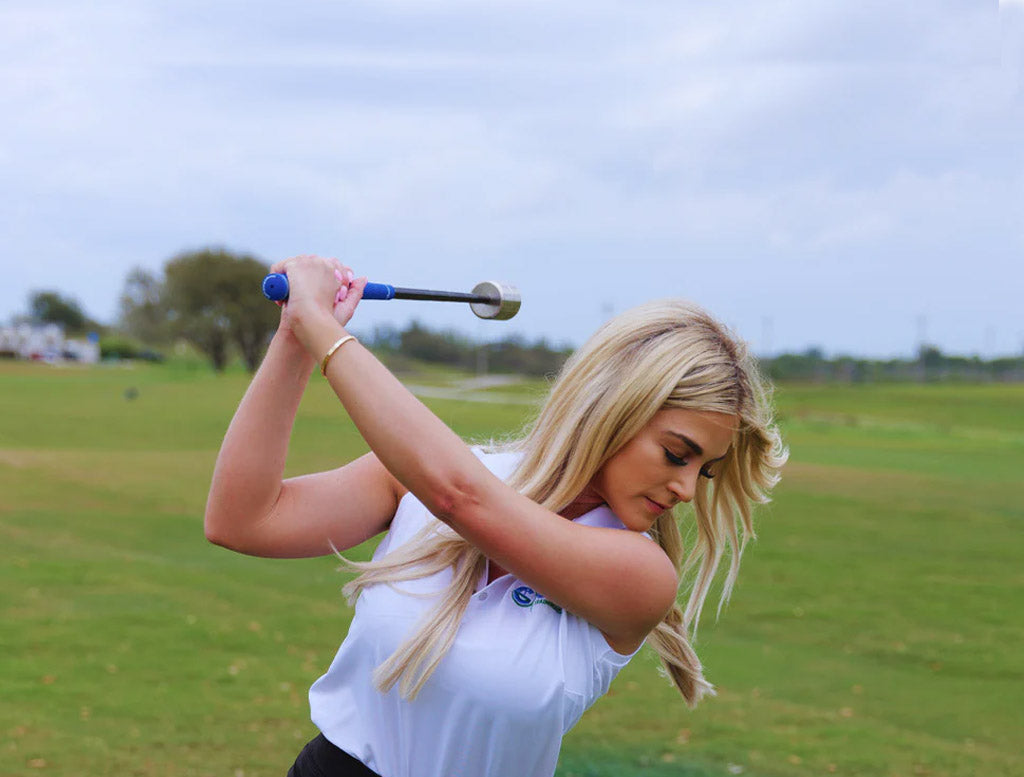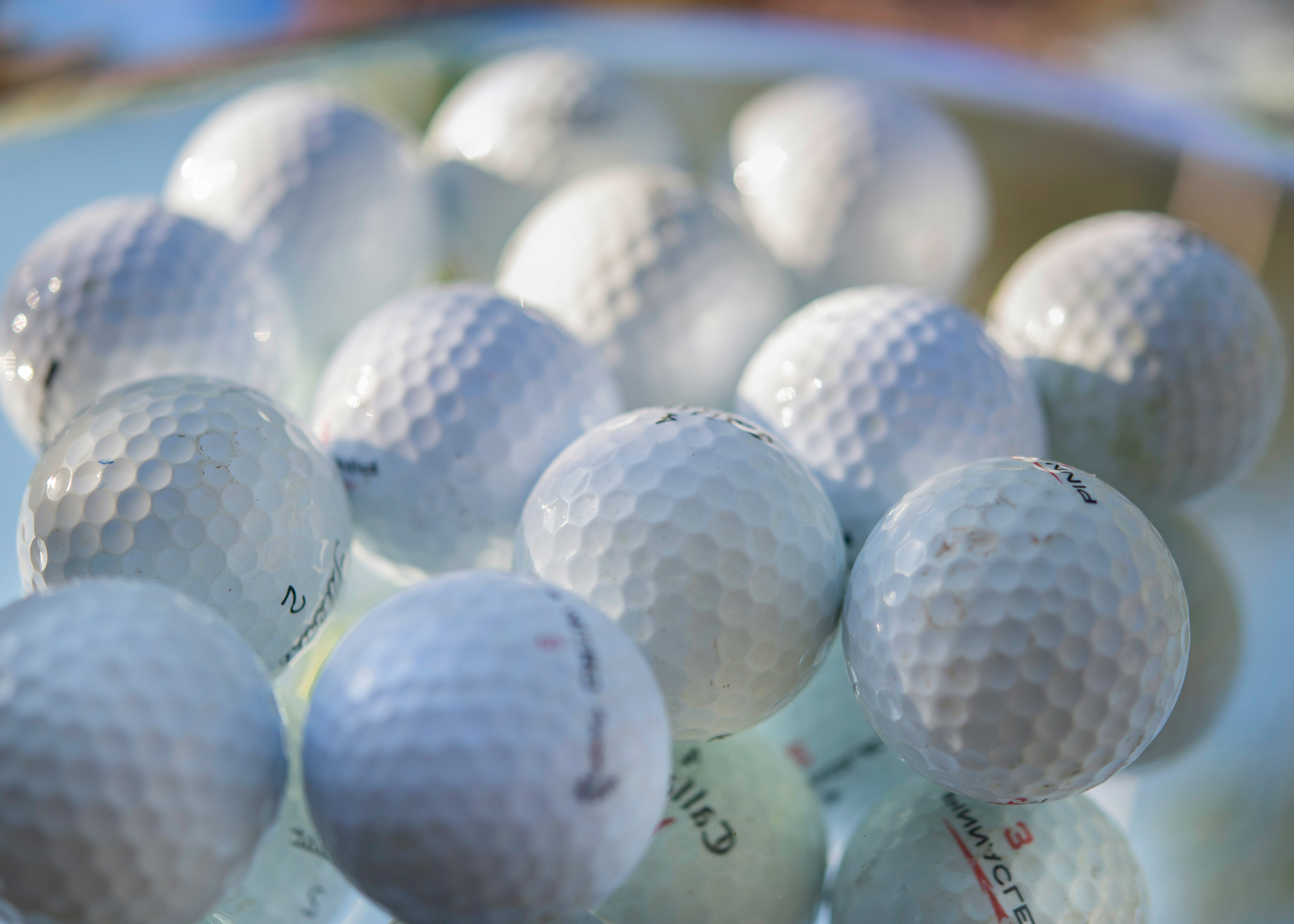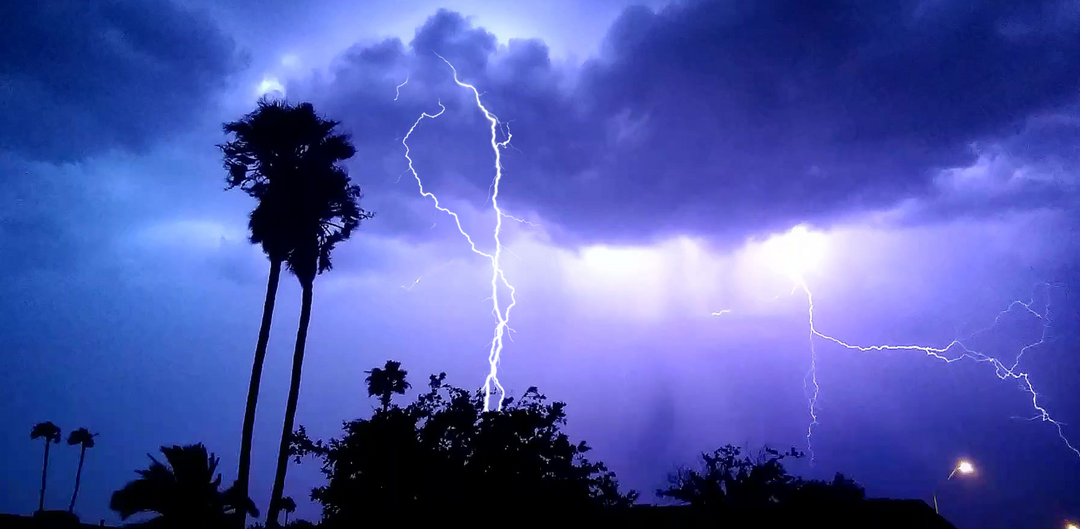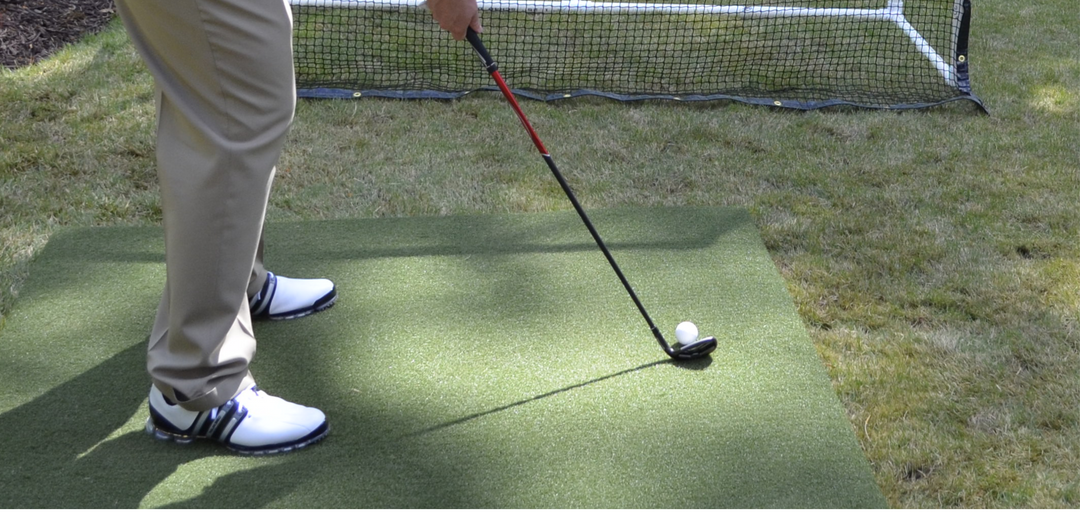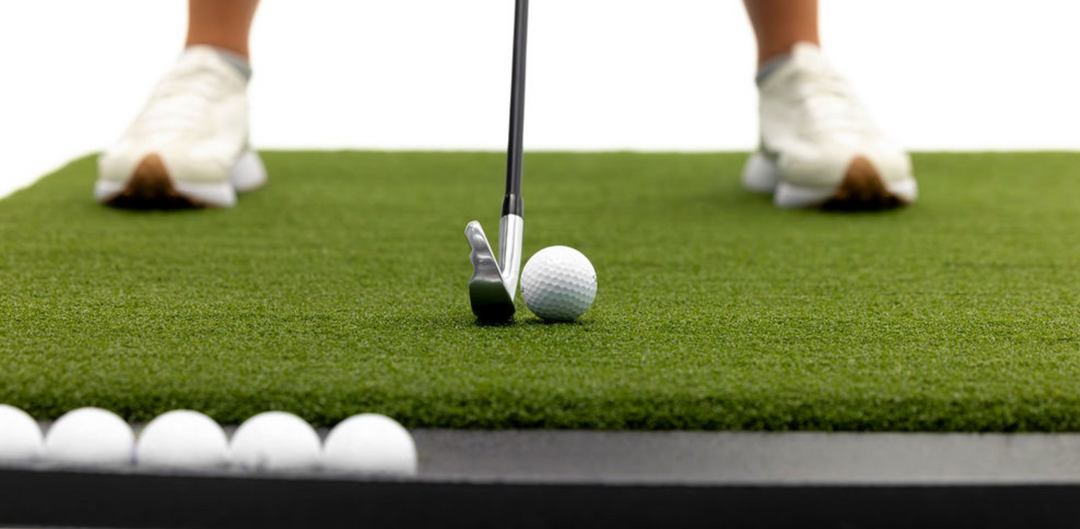Golf balls are not all the same. They come in a variety of designs, materials, and constructions, each offering different performance characteristics. Choosing the right golf ball can have a significant impact on your game, depending on your skill level, swing speed, and what you're looking to achieve on the course. Here's a breakdown of the types of golf balls and their key features:
- Two-Piece Golf Balls
Best For: Beginners and high-handicap players
- Construction: Two-piece golf balls are the most basic and affordable option. They consist of a solid rubber core and a durable cover made of Surlyn (a type of plastic).
- Performance: These balls are designed for distance and durability. The solid core provides a large energy transfer, helping to maximize distance, especially for players with slower swing speeds.
- Feel: These balls offer a firmer feel, which may not provide as much control around the greens but are ideal for longer shots.
- Durability: Two-piece balls are known for their long-lasting durability, making them great for beginners who may lose more balls during a round.
Examples: Titleist TruFeel, Callaway Supersoft, Srixon Distance
- Three-Piece Golf Balls
Best For: Mid-handicap players
- Construction: A three-piece golf ball includes a solid core, a mantle layer, and a urethane cover. The mantle layer helps control spin and enhances the overall performance of the ball.
- Performance: These balls offer a balance between distance and spin. They provide more control around the greens compared to two-piece balls, but still have a solid amount of distance off the tee.
- Feel: The urethane cover gives a softer feel and better control, especially on short game shots, while still maintaining distance for longer clubs.
- Durability: The cover is more durable than that of higher-end balls but may not last as long as two-piece balls.
Examples: Bridgestone Tour B RX, TaylorMade Tour Response, Callaway Chrome Soft
- Four-Piece Golf Balls
Best For: Low-handicap players and advanced golfers
- Construction: Four-piece balls have a multi-layer core with a cover made of urethane. They typically feature a dual or triple mantle layer between the core and cover to optimize both distance and spin control.
- Performance: These balls are designed to offer excellent spin control, especially around the greens, while also providing distance off the tee. They are perfect for golfers who want more control with their short game without sacrificing distance.
- Feel: The multi-layer design allows for a soft feel on the greens but still provides solid performance for longer shots. They tend to have more workability, allowing skilled golfers to shape shots.
- Durability: While these balls have great performance characteristics, their durability is not as long-lasting as two-piece balls due to the softness of the urethane cover.
Examples: Titleist Pro V1, TaylorMade TP5, Callaway Chrome Soft X
- Five-Piece Golf Balls
Best For: Expert golfers and tour players
- Construction: The five-piece golf ball features a multi-layer core, dual mantle layers, and a soft urethane cover. This construction maximizes distance, spin control, and feel.
- Performance: These balls are engineered for maximum performance, offering exceptional spin control around the greens and high ball speeds off the tee. They provide high launch and low spin off the driver, while offering impressive control on approach shots and around the greens.
- Feel: The five-piece balls offer the best combination of a soft feel and responsive performance for skilled players. They give excellent control and workability, especially for players who like to shape their shots.
- Durability: Similar to four-piece balls, they have a softer cover, meaning they won't be as durable as two-piece balls but are made for the best possible performance.
Examples: TaylorMade TP5x, Titleist Pro V1x, Srixon Z-Star XV
- Low Compression Golf Balls
Best For: Golfers with slower swing speeds
- Construction: These balls are designed with a softer core to provide more distance and ease of compression for players with lower swing speeds.
- Performance: They are ideal for golfers who need help generating more distance with their driver or long irons. The low compression allows for more energy transfer, leading to greater ball speed and distance, even with slower swings.
- Feel: These balls feel softer off the clubface, which is more comfortable for golfers who don’t hit the ball as hard or consistently.
- Durability: These balls may not be as durable as high-compression balls, but they perform well for golfers with slower swings.
Examples: Callaway Supersoft, Titleist TruFeel, Srixon Soft Feel
- High Compression Golf Balls
Best For: Golfers with faster swing speeds
- Construction: High-compression golf balls have a firmer core that requires more energy to compress. These balls are often used by players with higher swing speeds.
- Performance: They are designed for players who generate a lot of clubhead speed and want to maximize their distance. These balls tend to fly lower and provide less spin, which can be an advantage for skilled golfers who don’t need as much spin.
- Feel: High-compression balls feel firmer off the clubface and offer less touch on approach shots and around the greens. They are better suited for players with fast swing speeds who can still generate spin and control.
- Durability: These balls tend to last longer due to their firmer construction and reduced spin.
Examples: Titleist Pro V1x, TaylorMade TP5x, Bridgestone Tour B X
- Surlyn Golf Balls
Best For: Golfers looking for durability and distance
- Construction: Surlyn balls are made with a harder, more durable cover (made of a plastic-like material called Surlyn). This makes them highly resistant to scuffing and damage.
- Performance: Surlyn balls are designed for distance and durability, making them ideal for beginners or recreational golfers who want a ball that won’t wear out quickly.
- Feel: These balls tend to have a firmer feel and generally don’t offer as much spin or control as urethane-covered balls, especially on approach shots and around the greens.
- Durability: Surlyn balls are incredibly durable and are typically the most affordable option.
Examples: Callaway Warbird, Titleist NXT, Wilson Staff Fifty
- Urethane Golf Balls
Best For: Golfers seeking spin control and soft feel
- Construction: Urethane balls have a soft urethane cover, which provides better spin and feel around the greens compared to Surlyn balls. They are often found in higher-end multi-layered balls.
- Performance: Urethane balls are designed for control and spin, particularly for short-game shots like chipping and putting. They also provide better performance on approach shots and when hitting with wedges.
- Feel: These balls offer a softer feel compared to Surlyn-covered balls, providing better feedback and control.
- Durability: Urethane balls are generally less durable than Surlyn balls because of their softer cover, but they offer superior performance, particularly for skilled players.
Examples: Titleist Pro V1, Callaway Chrome Soft, TaylorMade TP5
Conclusion
Choosing the right golf ball depends on your swing speed, skill level, and the performance characteristics you value most. Beginners typically prefer two-piece or low-compression balls for maximum distance and durability, while more advanced players might choose multi-layered urethane balls for greater spin and control around the greens. Experiment with different types of golf balls to find the one that best suits your game and helps you lower your scores.


